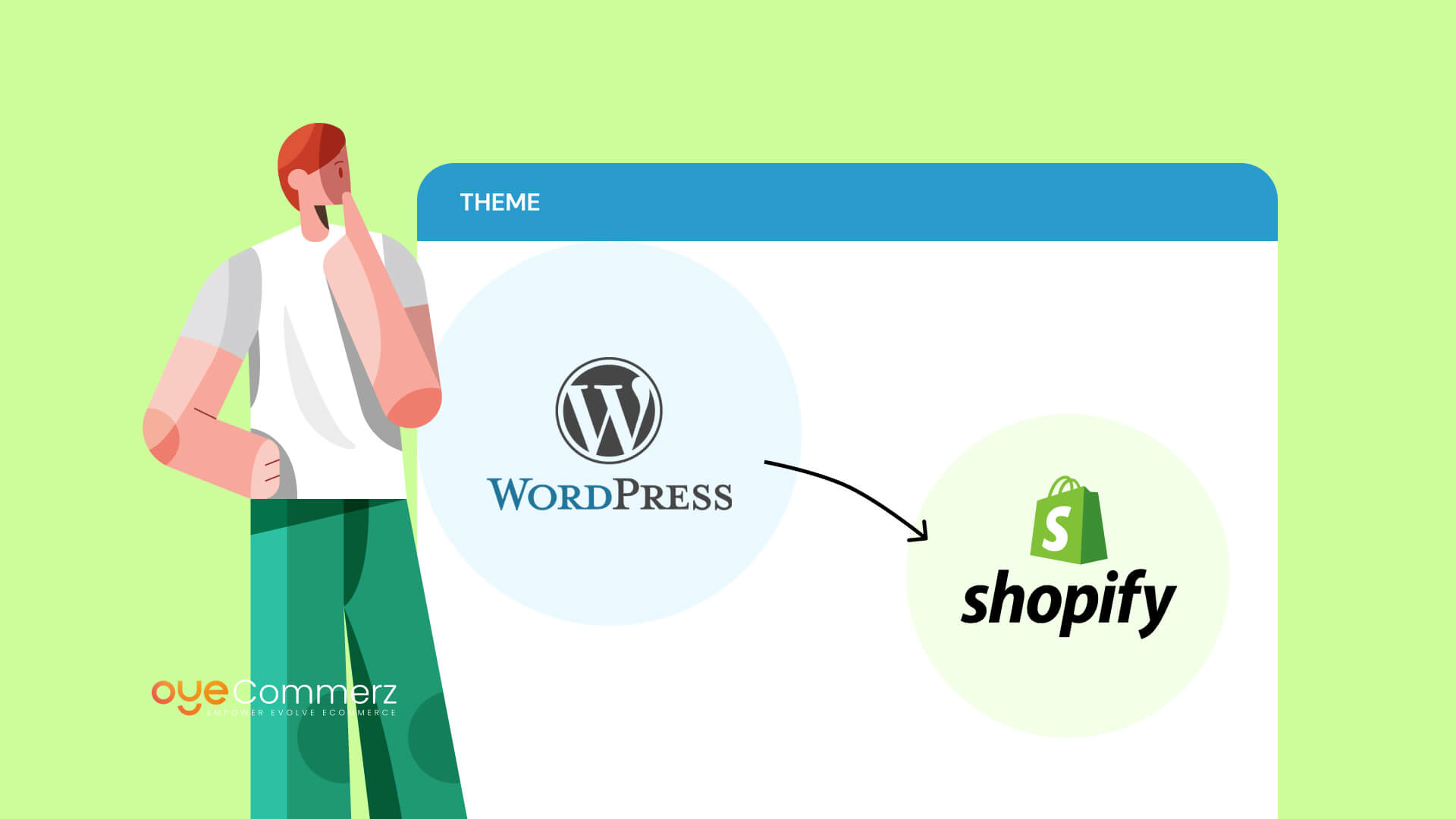Transitioning from WordPress to Shopify marks an exciting step toward optimizing your e-commerce operations. As companies expand, choosing a platform that aligns with scalability, user experience, and flexibility is essential. Shopify is widely recognized as a favorite for e-commerce professionals, providing unmatched flexibility, security, and ease of use. In this guide, we’ll explore the transformative impact of this migration, highlight the advantages, and share practical tips to facilitate a seamless transition.
1. Why Migrate from WP to Shopify?
WordPress, paired with WooCommerce, has served countless online stores. However, as businesses scale, challenges like reliance on plugins, data risks, and complex setups often obstruct growth. Shopify, specifically created for digital retail, addresses these concerns with an comprehensive, user-friendly platform. Statistics back this transition—Shopify powers over 4.4 million websites globally, with a reported 10% increase in sales conversion rates for many businesses post-switch.
2. Key Benefits of Shopify for E-commerce Success
Shopify’s robust ecosystem caters for expanding brands. Its standout features include:
- Effortless Design Flexibility: Shopify offers over 80 expertly crafted themes.
- Built-in Features: Capabilities such as Shopify Payments and built-in SEO save time and effort.
- International Expansion: Currency versatility and regional customization empower brands to expand internationally.
Additionally, Shopify delivers an availability percentage of 99.98%, ensuring your website is always operational.
3. Preparing for WP to Shopify Migration
Before migrating, assess your existing setup. Analyze product data, customer details, and SEO performance. Tools like Shopify’s Migration Kit or third-party solutions can simplify this process. Develop a comprehensive plan, ensuring all resources—product descriptions, media files, and blog content—are optimized for transfer.
4. Data Migration: A Critical Step
Data migration is a cornerstone of a smooth transition. When migrating from WP to Shopify, prioritize:
- Product Information: SKU, descriptions, and groupings.
- Customer Data: Emails, order history, and preferences.
- Search Engine Considerations: Retain meta tags, URLs, and redirects to maintain search rankings.
Leverage tools such as LitExtension to streamline data transfer while minimizing errors.
5. Tailoring Your Shopify Store to Fit Your Brand
After the move, personalizing your Shopify store ensures it aligns with your business identity. Take advantage of Shopify’s intuitive page builder to design pages effortlessly. Shopify's templates are optimized for all devices, ensuring a smooth user experience across devices—a critical factor, given 74% of e-commerce traffic is generated by mobile users.
6. Maintaining SEO During Migration
Search engine optimization is crucial for maintaining your online presence during migration. Shopify excels in SEO with clean URL structures, preloaded features, and smooth content management. Make sure you:
- Set up URL forwarding for existing links.
- Enhance updated content with targeted phrases.
- Use Shopify's apps Plug in SEO to track analytics post-migration.
7. Essential Tests After Migrating to Shopify
Once the migration is complete, run detailed checks.
Check: - Website speed (Shopify delivers faster speeds compared to WP).
- Payment integration reliability and transaction flow.
- Mobile responsiveness.
Quality assurance guarantees your store delivers a seamless shopping experience from day one.
8. Case Study of a Successful Migration
One such migration success story is Gymshark, a sportswear company that moved to Shopify. Post-migration, the company saw a 60% boost in mobile sales and reduced site downtime. This highlights the potential WordPress to Shopify guide of Shopify in driving e-commerce growth.
9. Challenges and Solutions
Migration is not without obstacles, such as information accuracy and reconfiguring custom functionalities. However, Shopify’s robust support and external professionals make overcoming these hurdles manageable. Collaborating with experienced Shopify developers helps guarantee a smooth transition.
10. Starting Your Journey with Shopify
Migrating from WordPress to Shopify marks a strategic decision to e-commerce. By addressing scalability, simplifying management, and improving buyer satisfaction, Shopify enables companies to succeed in competitive markets.
Conclusion
Switching from WP to Shopify is a strategic move that can greatly enhance your online business performance. With WordPress online store to Shopify a well-structured strategy, the right tools, and expert support, you can achieve new success milestones.
Excited to start the journey? Reach out today to learn how our Shopify migration services can transform your online store. Contact us now, or consider: Can your business afford to miss out on Shopify’s growth potential?
